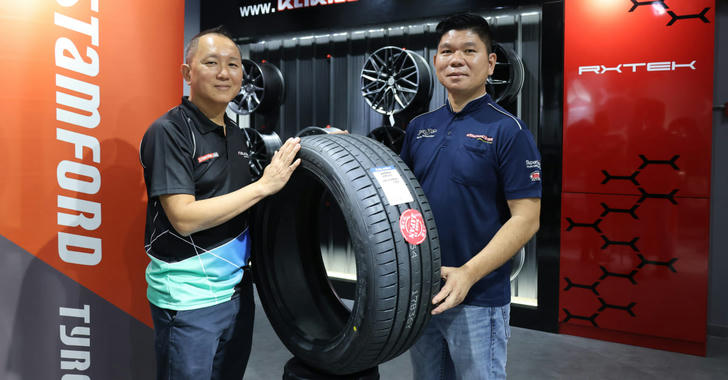Unlocking the Secrets of Tires: How to Choose the Right Ones for You
When it comes to vehicle safety and performance, tires are a crucial component. Selecting the right tires can enhance your driving experience and ensure safety on the road. Here's a comprehensive guide to help you choose the perfect tires for your needs:
1. Understanding Tire Types
Tires come in various types, each designed for specific conditions:
All-Season Tires: Suitable for most climates, offering a balance of comfort and traction. They are ideal for daily commuting.
Winter Tires: Designed for icy and snowy conditions, providing superior grip and safety.
High-Performance Tires: Optimized for speed and handling, perfect for those who enjoy driving aggressively.
All-Terrain Tires: Built for off-road adventures, offering durability and traction on unpaved surfaces.

2. Choosing Tires Based on Your Driving Needs ⚙️
Driving Style: If you frequently drive at high speeds, high-performance tires are a good choice. For comfort, all-season tires are recommended.
Vehicle Type: Different vehicles (sedans, SUVs, sports cars) require different types of tires. SUVs often need more durable tires with better traction.
Real-World Case:
Denver engineer Mark learned this the hard way with his 2019 Jeep Wrangler. After installing standard all-season tires, he suffered sidewall tears during a Moab off-road trip. Switching to BFGoodrich All-Terrain T/A KO2 tires—with triple-layer sidewall protection—allowed him to conquer rocky terrain safely.
3. Tire Specifications and Size ✅
Tire Size Indication: Understand the tire size notation (e.g., 225/55R17) to ensure the correct fit.
Load Index and Speed Rating: Choose tires with the appropriate load index and speed rating for your vehicle's requirements.
Cautionary Case:
Miami driver Lisa upgraded her Honda CR-V’s tires from 215/65R16 to 235/55R18 for aesthetics, causing:
A 4.7% speedometer error ($128 speeding ticket)
Failed annual inspection (tires protruded 1.2 inches beyond fenders)
4. Tire Maintenance and Replacement
Tread Depth: Regularly check tread depth to ensure safety. Replace tires when the tread depth reaches 1/16 inch.
Replacement Timing: Tires typically need replacement every 5-6 years, depending on usage and conditions.
Proof of Care:
LA rideshare driver José extended his Michelin Energy Saver A/S tires to 120,000 miles (57% beyond average lifespan) by:
Monthly pressure checks (maintaining 35±1 psi)
Rotating tires every 5,000 miles (23% lifespan boost)
Applying 303 Aerospace Protectant to prevent rubber degradation
5. Brand and Price Considerations 🌟
Reputable Brands: Opt for well-known brands like Michelin or Goodyear for quality and safety.
Price vs. Performance: Balance cost with performance to find the best value for your money.
6. Tire Performance Comparison
When comparing tires, consider these key performance metrics:
Traction: Essential for wet or snowy conditions.
Lifespan: Different tires have varying lifespans; high-performance tires typically wear faster.
Energy Efficiency: Impacts fuel consumption and environmental impact.
Handling: Affects vehicle stability and driving pleasure.
Comfort and Noise: Influences driving experience.
7. How to Choose the Right Tires and Get the Best Value
3 Key Steps to Choosing the Right Tires
Identify Core Needs
Climate dictates type: Winter/snow tires for snowy regions, all-season tires for mild climates, all-terrain tires for off-road needs.
Vehicle compatibility: Strictly follow your vehicle manual’s size, load capacity, and speed rating specifications.
Driving habits: Prioritize durability for frequent highway driving; focus on quietness and comfort for city commutes.
Quick Filtering Tips
Parameter priorities: Traction rating (AA/A/B/C) > Treadwear index (300+ ideal) > Noise level (below 70dB for quieter rides).
Check certifications: Look for the "3PMSF" (Three-Peak Mountain Snowflake) symbol for winter performance or "M+S" (Mud and Snow) markings.
Avoid Common Mistakes
Never mix tire types (e.g., winter tires on the front axle with all-season tires on the rear).
Avoid oversized rims—low aspect ratios (below 40) increase the risk of sidewall bulges.
Quick Decision Checklist
✅ Must-do: Take a photo of the full specifications on the original tire sidewall with your phone.
✅ Avoid pitfalls: Reject "old stock" tires manufactured over 2 years ago (check the last four digits of the DOT code).
